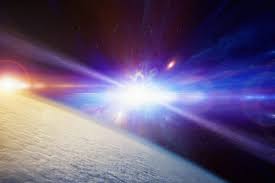Supernova: Space scientists have discovered a star whose luminosity is 57 thousand crore times more than that of the Sun. According to scientists, since it is about 380 crore light years away from the earth. That’s why we are not able to see it. Scientists say that this bright star is a big ball of hot gases. However, so far no scientist has claimed whether it is a star or a supernova. At present, scientists are trying to understand what it should be called. Then some scientists are calling it a star and some are calling it a supernova.
Scientists who call this bright thing in space a supernova believe that it is the brightest and most powerful magnetar ever discovered. Professor Krzysztof Stanek of the Department of Astronomy at Ohio State University says that if it is a supernova ie magnetar, then it will not come between 1 to 10 on the scale of power, but at 11. He says that such a powerful supernova has never been discovered till date.
All the stars together will shine 20 times less than this.
Scientists say that even compared to the most powerful supernova discovered so far, its brightness is about 200 times more. At the same time, some scientists even claim that even if all the stars known in the constellation are added, they will fade in front of its brightness. On this scale, this supernova or magnetar or star will be 20 times more than the united brightness of all the stars. Stanek said that nothing can be said about this thing now. We still do not understand what it is. Why does it shine so much?
Stanek said that it could be a very fast rotating star. Because of this its magnetic field can also be very large. He said that this thing is making 1000 rounds per second. Therefore, its brightness appears to be 57 thousand crore times more than that of the Sun. So much energy is coming out of it that it can burn anything to ashes. This amazing thing in space was first seen by the Sky Automated Survey of Supernova. Please tell that this network has found more than 250 supernovas so far. At present, scientists are busy gathering more and more information about it.
 Indian Thought Latest News & Views
Indian Thought Latest News & Views


